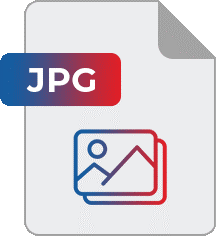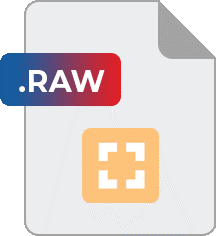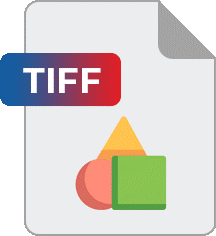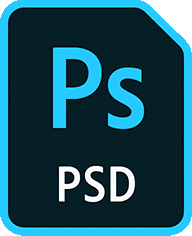Which is the highest quality image format? Is it the very popular JPEG, the photographers’ favorite RAW, lossless TIFF, or some other advanced format?
Whether you are a photographer, graphic designer, or a photo enthusiast, it’s important to understand the purpose of different file formats while working on a photo.
Image file formats such as JPEG, TIFF, PNG, RAW, and others store digital data either in an uncompressed or a compressed format. The uncompressed format is lossless, which means it holds to the image data even after reworking on it. Whereas a compressed or lossy format photo will degrade every time you perform any action on it, such as edit, save, etc.
The highest quality format for photos can be one that is uncompressed or lossless. Going by that logic, you can say lossless RAW or TIFF formats are the best. But there is more to image file formats than this. Let’s take some examples to understand.
Below are a few photo quality loss situations:
Case 1: You edited a RAW image and uploaded it on your website, but it shows in poor quality with grains and noise.
Case 2: You shared an image to a friend on email, but he/she asks for another good quality photo.
Case 3: You shared a large-sized or high-resolution photo, but it failed to transfer or showed up as distorted.
Have you wondered why a photo that you captured or created in the highest quality appears good on your system, but not after sharing, uploading on a website, or editing?
It’s because you may be using the wrong image file format!
Yes. And this indicates that the decision of the best photo format depends how you will use that image.
The best image format for the web may not be a good format for printing.
Likewise, the best file format for printing photos may not be the right one for editing.
File format is critical to the usage of the photo. The right photo file format should have the required quality to meet the intent, such as processing, sharing, printing, etc.
Here we bring how different image file formats, commonly used by photographers and designers, should be exploited for various usage:
JPEG (Joint Photographic Experts Group) is the most popular image format. It compresses the image data to save a photo in a smaller size. That’s the reason DSLRs, digital cameras, and mobile phone cameras offer JPEG as one of the output image formats along with the RAW format. This way, the device can save more pictures on the camera memory card.

JPEG’s advantage is that it can store 24 bits per pixel and display more than 16 million colors. So, you can use it to save high-resolution images in a smaller size and facilitate quick download or transfer. This is the reason JPEG/ JPG is considered the best image format for web.
However, JPEG compression comes at the cost of image quality. Every time the lossy JPEG format is saved or edited, its quality degrades.
- Upload photos on website or social media platforms
- Print high-resolution photos
- Quickly share the picture via chat or email
- Store personal photos in a digital album on your computer, media, or external drive
Don’t use a JPEG in the below case:
If you want to edit your photos, do not save them in JPEG. The image format doesn’t have a transparency channel and saves any edits into one layer, which you cannot undo or change.
RAW files are the highest quality image format. They are loved by photographers as RAW format records all data from the sensor of the camera.

Since RAW is an uncompressed format, it gives immense creative liberty to the photographers during post-processing. You can edit RAW photos without compromising on the original picture quality.
All cameras, be it DSLR, mirrorless, point and shoot, or others, offer the choice to shoot pictures either in JPEG or RAW.
Every brand has a unique RAW format such as CR3 of Canon, NEF of Nikon, SR2 of Sony, RAF of Fuji, etc. You can easily fix the noise, adjust white balance, exposure, sharpness, contrast, and do a lot more without worrying about the picture quality.

Tip – Repair corrupt or damaged photos of any file format Pictures are of immense value as artworks, memories, or for professional use. Whether in RAW or JPEG, losing them to corruption is a big loss. Unfortunately, if you find any of your photos corrupt, damaged, or distorted, download
Stellar Repair for Photo – an efficient tool to repair corrupt photos of RAW, JPEG, and TIFF file formats shot from any camera.


However, RAW format occupies plenty of storage space. They take longer to download and a considerable time during post-processing.
You should take the decision to record in RAW or JPEG, depending on the usage.
- Editing photos in the highest quality using image editing software
- To upload photos online
- To create web graphics
- To print images. Instead, use JPEG or TIFF
- Share pictures via email or chats
TIFF (Tagged Image File Format) is a lossless image format. It is mostly used by professional photo designers and graphic editors for post-production editing.

If you have to work on photos, prefer TIFF over JPEG format, as it won’t result in quality loss after editing or repeated ‘Save’ action.
TIFF is commonly referred as the best file format for printing photos, especially the large-sized posters.
But like any other uncompressed format, TIFF image files occupy a lot of space on the storage device.
- Editing photos
- Printing photos or graphics in the highest quality & in large size
- Scanning images in high quality
- For uploading images or graphics on a website
PNG (Portable Network Graphics) image format offers lossless compression. It can display a varied degree of background transparency and allows you to set color brightness and apply effects. Plus, it can hold 24 bits per pixel as well as an RGB color palette.

This is why PNG is considered the best image format for editing, after RAW and TIFF formats. You can save the image in the highest quality even after editing and resave action.
However, due to lossless compression, its file size gets large. So if you are looking for an image format to share on social media or email, prefer JPEG instead of PNG.
- Editing that involve background effects. Commonly used in creating logos, overlays
- Creating transparent web graphics
- Creating graphics with limited colors or a small color palette
Don’t use a PNG in the below case:
- Avoid using PNG format for printing photos in any size. It is optimized for the computer screen and won’t offer the right picture quality after print. Prefer JPEG or TIFF.
Adobe Photoshop proprietary image format — PSD is used by graphic designers to process good quality photos. It uses lossless compression.

When you open any image file format in Photoshop, the image editor converts it to PSD format. You can work on this PSD file in Photoshop. PSD format can maintain files up to 2 GB in size.
PSD has all the qualities that a photographer or a graphic designer needs — multiple image layers, editing of individual layers, channels, ability to contain high-quality graphics data, and more. It saves an image of each layer, which lets you undo a change anytime.
PSD maintains the highest quality image, irrespective of edits, and number of resaves done on it.
- Edit or manipulate photos – add effects, retouch, color correction, etc.
- Email your work in the PSD file.
- Print photos or graphic designs. Note: Not every printer accepts PSD format. Check your printer manual if it supports PSD files.
- Archive photos to CD, DVD, or hard drive.
- As PSD file size can get large after editing on individual layers, it is not the best format to share on social media platforms.
Note: Photoshop lets you share your work directly to social media channels, but it automatically converts PSD files to JPEG before sharing.
Conclusion
Photographers can choose to capture photos in RAW format if they want to work on those pictures. Else, more number of JPEG files can be recorded on the camera SD card. TIFF is the best way to get a high-quality print result while JPEG format is easy to share on the web, email, or social media. PSD file formats are good for editing in multiple layers. After RAW and TIFF formats, PNG format is the best for editing.
So photo quality doesn’t always imply big file size and high resolution. It should have the right format too. Clearly, the best image format is the one that meets your intended usage.
Was this article helpful?